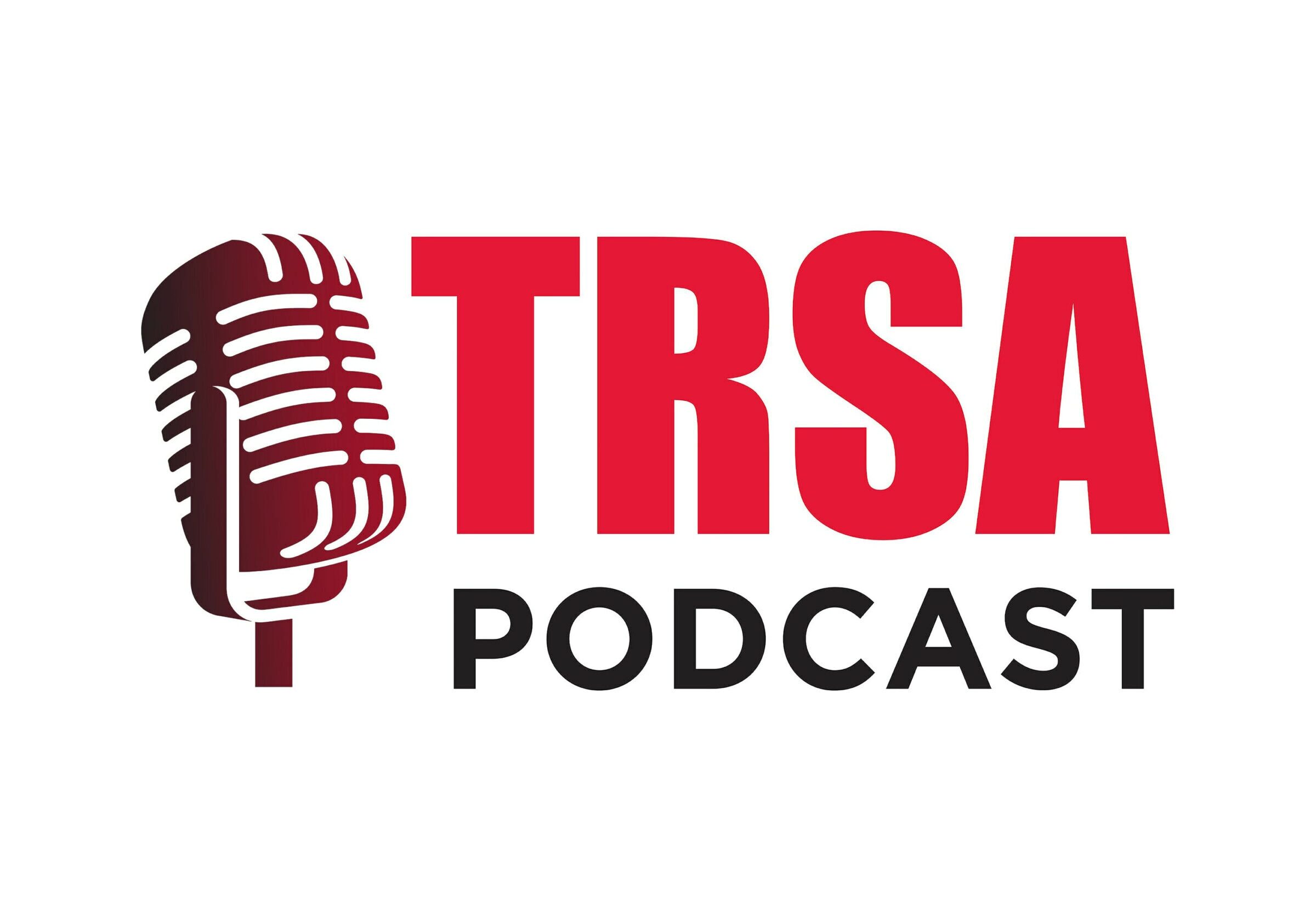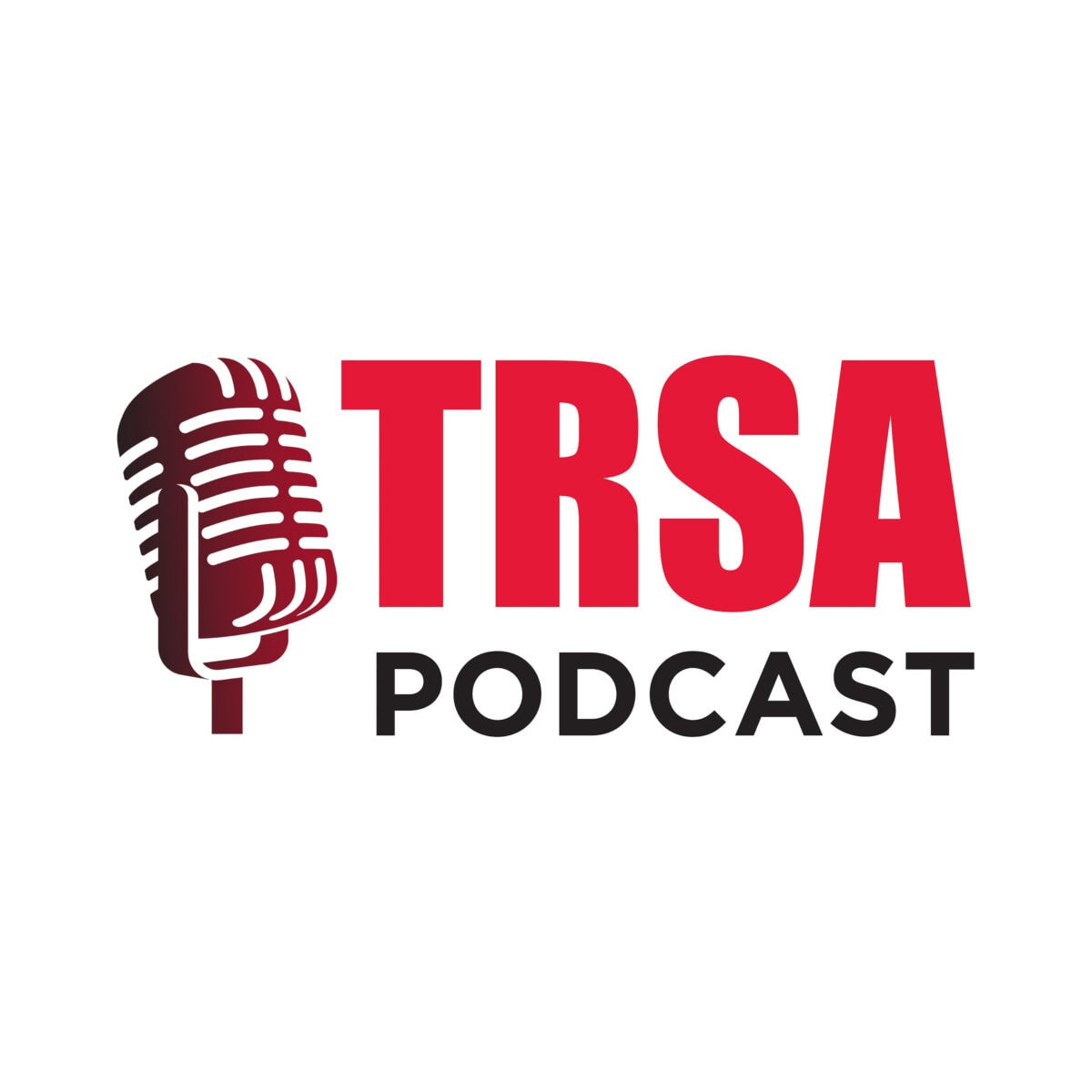Eric Kurjan, the president of Six Disciplines Consulting Services, a firm that has worked with several leading organizations in the linen, uniform and facility services industry, joins us to discuss identifying and developing leaders in the commercial laundry industry, as well as the benefits of TRSA’s Leadership Development Workshops.
Welcome to the TRSA podcast. Providing interviews and insights from the linen, uniform, and facility services industry. Most Americans might not realize it, but they benefit at least once per week from the cleanliness and safety of laundered, reusable linens, uniforms, towels, mats, and other products provided by various businesses and organizations. TRSA represents the companies that supply, launder, and maintain linens and uniforms. And in this podcast, we will bring the thought leaders of the industry to you.
Thanks again for tuning in once more to the linen uniform and Facility Services podcast by TRSA, sponsored by 6 Disciplines Consulting Services. I’m your host, Jason Risley, the senior editor of digital and new media at TRSA. A critical HR topic in today’s competitive job market is developing and training leaders. On that note, I recently spoke with Eric Kurjan, the president of 6 Disciplines Consulting Services. 6 Disciplines delivers management and executive consulting, coaching, strategic advisory services, leadership development, and Malcolm Baldridge National Quality Award Consulting to clients across North America, including several linen uniform and facility services operations.
Prior to joining 6 disciplines, Kurgan was the president of Plumbline Solutions, a 75 person start up software consulting company. Prior to Plumbline, Kurgan was general manager of the North American Professional Services Organization for Microsoft Corporation. As general manager, he led a team of more than 500. During the interview, Kurgan shared his thoughts on developing leaders in the commercial laundry industry as well as TRSAs new leadership development workshops. I’m here today with Eric Kurgan of 6 Disciplines Consulting Services.
We’re talking a bit about leadership development. To kick things off, why is leadership development such a hot topic? Well, research has shown us that an organization’s ability to hit its goals are directly tied to the performance of its people. That shouldn’t come as a big surprise. But if we don’t have well trained, well connected, and committed people, then hitting our goals are virtually impossible.
So we need to have structure to help people build skill, And in a tight labor market, where do those leaders come from? They really come from inside the organization. So we need to have that skill set. We need to have those capabilities underway and being built within the organization. So when that need arises, I can call on a pool of team members within the organization that might fit that need.
And it goes beyond that. It’s not just a matter of saying hey, we’ve got some people on deck who can move into roles although important. It’s also the people who are in their current roles because those skills really need to be developed and honed. And, unfortunately, the observation has been that there’s an expectation of performance when you’re in a given role. So if you have the title of manager, somehow we have this expectation that you should act and perform as a manager, whatever that definition may be in that organization, but that expectation is there.
So there are many situations where those individuals haven’t been given great clarity in what the role is, and they certainly haven’t been given great training to help them be successful in that role, and there isn’t any ongoing coaching. So if you look at all those factors, you really need some form of leadership development in an organization in order for that organization to hit its goals. And that’s why it’s a hot topic. And where does the need exist in client organizations you’ve been working with? Interestingly, at all levels.
You know, we tend to think about individuals and organizations maybe just at the top level, the the GM or the director of a given role or the leader of the operations side of the business or the leader of the services side of the business. This is where we tend to think. What we don’t think about are those folks who have leadership roles below that and even the layer below that. So we have regional managers or district managers or branch managers, and then we might even have supervisory roles in the organization. And what I have found is that there’s very little emphasis placed on those next layer leaders.
So emphasis is placed at the top layer, and they hire the most well connected. So they’re having conversations amongst themselves as as team members, with the CEO or president of the organization. So they’re well connected. However, that connection begins to fray the further we go down in the organization. So the messages become less clear, the objectives become less clear, the methods that we want to be employed in the organization become less clear.
And so we start to see that those people who are responsible for very important parts of the business just aren’t getting trained and aren’t getting the things that they need in order to be successful in that role. So if you go back to what we originally talked about at the beginning of this is if you don’t have good people in your organization doing the things you need them to do, it’s awfully difficult to hit those goals. Why do organizations seem to be hesitant to get their leaders trained? Well, interesting piece for that is that organizations tend to think about training as a checkbox. So at the beginning of the year, we make a decision that Jason, as the leader of a given area in the company, needs to attend a training session so we can mark off that he actually worked on some development function or subdevelopment area in his job.
And that checkbox concept just really doesn’t go very far because we don’t get them to the level that we need to get them to. We don’t get them trained to the the level that we need to get them to. There just isn’t much emphasis placed on training, and if it’s just a checkbox and we complete the checkbox, that that might be considered good, but it certainly doesn’t, carry forward and produce a result that we would like. The second piece of this is it’s often the first item that gets cut or postponed in financially challenging times or in times where we’re just plain time constrained. So it’s very easy to say, well, we’ll postpone that.
We won’t send Jason on this particular, training session or to this particular training session on this particular date because, financially, we don’t wanna do that, or we think we’re too busy to train Jason, so we can’t even check the box. So, unfortunately, it seems to be an area where we just don’t invest heavily enough in organizations to get people ready for the job that they’re in or prepare them for their future job. Why is this course different than other courses that are offered? Well, there’s several factors here. One is that it includes all the layers in the organization, even potentially those who don’t have a direct report today.
So that’s that’s very different. As I mentioned earlier, it’s very common to send somebody to that course, and that individual might be at a, more senior level or you’ve picked one person in the organization to go build some skills because you think that maybe they have a future, role in the organization, so you’re trying to build some skill around that. But in this particular case, we’re trying to train all the layers in the organization. The second piece is it’s local. So what we do is we bring the facilitator, the trainer to your facility or a facility outside of your your location, but they’re in your town so that we can get more people to participate in the in the session as opposed to having to fly them to a destination and pay for all that travel, pay for the airfare, and all the other pieces associated with it.
The facilitator comes to you. The 3rd piece is that it really becomes a team building event. So the titles are checked at the door. So you’ve got individuals from supervisory roles at the level to the senior leaders in the organization all sitting in the same course. And, we do a really good job of splitting up people so that they’re not gathered up by their usual groups so that they gain the opportunity to work with someone who they don’t normally don’t work with.
And, this structure also helps develop a culture of openness and improve communication. We’ve seen some really dynamic changes in organizations in terms of having conversations that typically wouldn’t be held or have never been held. And so people have opportunity or given the opportunity to be very open and honest about, their observations and, how people behave, how people perform, how, the organization reacts to those, pieces. So the results have been very, very exciting and promising for organizations who go through this. Can you describe what the training course looks like?
Well, the first course there’s multiple courses, but the first course is referred to as self leadership. And, the self leadership course really covers, 10 lessons in small hands on group exercises. So we break the participants in the session into small 4 to 6 person tables, and this gives them a chance to work on given exercises together, which, again, builds, camaraderie and, allows them to build some skills. In those in those ten lessons, they begin to learn about openness and honesty, integrity and trustworthiness, emotional intelligence. What does it mean to be a customer focused organization?
Being agile in action, building an individual plan that you can manage, and then overall, what’s the self development outcome that you wish to have at the end of this particular event? So we work diligently to help those individuals gain, expertise or build some skills in in those various areas. The third element of it is that there are 3 assessments that are conducted, 2 of which are conducted prior, one during the workshop, to give some more insight to that individual about their behavior, how they perform, and how they’re perceived their their perceived performance. So we conduct something called a multi rater 360 survey, and that’s con conducted and completed by their peers, by their direct reports if they have direct reports, and or by their leader or manager. We also have them conduct or complete rather a DISC behavioral assessment.
This gives them an insight as to what their particular behavioral style is and then also allows them to gain some insight as to others’ styles, which improves communication. So when they learn how given individuals in the organization what their preferred behavior or preferred style is that gives them a chance to adapt to their style so they can communicate at a better level. And the 3rd piece is something known as emotional intelligence. And, this assessment takes a look at that individual’s emotional intelligence or EQ, and gives us a chance to, work on another area of their behavior and, help them perform, help them communicate, and help them interact with their colleagues in a much better way. And how do those individual assessments add value after the course?
Well, because, it is a an an assessment that they have in their hands at the end of the the workshop, they can go back and study that assessment for 1 and see how, their behaviors or their given actions are perceived. And one of the things that’s a key outcome of this course is that we have them identify what are they going to work on as a result of this course. So what area could they improve upon? Is that an area where we want them to, have more patients? Is that an area where we want them to, be a better listener?
Do is it an area where people perceive them as being, unengaged and and disinterested? Whatever those perceptions might be, it may be an area for them to define and identify the steps that they need to take in order to, improve their performance and improve the way they they act. And, the the assessments can be used as a way to help identify individual blind spots. And so it’s a very good tool, not only for the course and the workshop, but also after the workshop. Thanks again for joining us today, Eric.
Hey. Thank you, Jason. Appreciate it. For more information on TRSA’s leadership development workshops, contact TRSA’s manager of education, kristen Mudd, at kmudd@trsa.org. That’s kmud@trsa.org.
You can also reach Kristen at 703 519-0029, extension 116. Thanks again to our sponsor, 6 Disciplines Consulting Services. And as always, make sure you subscribe, rate, and review our show on iTunes, Google Play, and Stitcher.
Sign Up For Our Newsletter
Receive the latest updates on the linen, uniform and facility services industry from TRSA delivered straight to your inbox.









